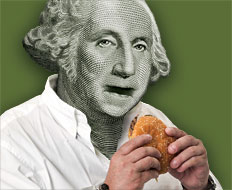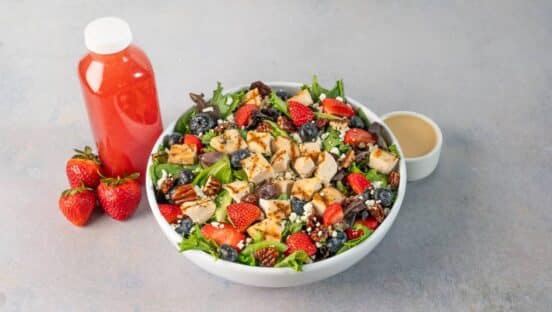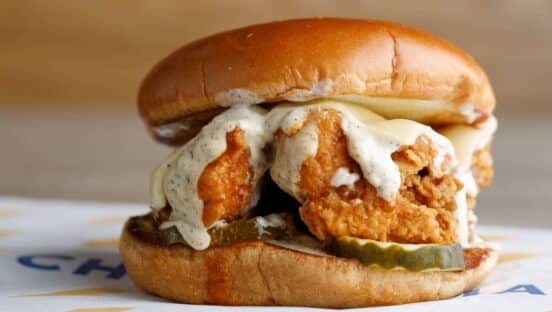In the hands of the quick-service restaurant operator, price might be the ultimate weapon, the key ingredient to swing a customer and prompt a purchase in today’s dollar-conscious market.
And the quick-service industry knows it all too well, an awareness that has sparked a decades-long raging debate about what cheap food—a term used here to describe price rather than a judgment on food quality—does for a restaurant brand, its operators, and the consumer.
In 1988, Taco Bell, then under the control of PepsiCo, launched its 59-cent Value Menu, a national quick-service chain’s first foray into cheap eats. Within two years, Taco Bell witnessed a 50 percent sales increase and traveled further into the discounting space with a three-tier pricing structure for its value items.
As envious of Taco Bell’s gains as they were inspired to craft a competitive response, quick-service behemoths such as McDonald’s and Burger King responded in 1990 with value offerings of their own, optimistic that the incremental volume would offset the lower menu prices. Fast-forward two decades, and value deals line the menus of many major quick serves, including Wendy’s and Subway, which rocked the industry last spring with the announcement that its limited-time $5 Footlong promotion would be a regular fixture on the chain’s menu.
As restaurants push value in a quest for market share, a reality that only intensified during the recession, the price wars have emerged as a fact of life—and one unlikely to disappear. So long as one competitive rival offers cheap food, others are compelled to follow suit lest they risk declining traffic and volume.
“If we could wave a magic wand and all brands would stop [offering value items] at the same time, then operators would be happy with the level playing field. But that’s not happening,” says Dennis Lombardi, executive vice president of foodservice strategies with Columbus, Ohio–based WD Partners. “For now, we’re looking at a competitive positioning that brands have to match.
“I wouldn’t want to be the lone ranger out there to drop the value proposition and raise prices because the consumer is still price-focused,” he says.
While some have used price-cutting as a tactic and others have overhauled operations to make lower prices a permanent strategy, the cheap food debate remains, forcing all segments of the industry to question the validity and benefit of low-priced options.
The Case for Cheap Eats
Since Taco Bell opened the cheap-food floodgates in 1988, many quick-service brands have continued to champion the need for value-priced options, particularly as like-minded rivals tout their offerings.
Besides volume and transactions, the argument arriving from many corporate offices cites increased traffic and sales potential. While some customers might enter with the intent to purchase two $1 sandwiches, they are likely to purchase additional items. Moreover, value menus can drive consumer behavior and maintain consumer awareness.
“The idea being that if brands can stay in my mental phonebook, then I’ll consider them for other dining options as well,” Lombardi says. “By bringing me back with value, they’re holding their relevance.”
Value items have historically been viewed as a means of driving traffic, appealing to new audiences, and building up average check size. During the recession, however, value menus began to serve a slightly different purpose, as some customers traded down from signature items or ordered a number of cheaper items from the value menu for their dining visit.
The mere presence of such low-priced offerings, many analysts argue, has created a consumer trained to expect cheap food. As a result, the value menus become self-perpetuating, says Leslie Kerr, a pricing consultant and founder of Boston-based Intellaprice.
“To take [the value items] away means risking alienation of price-sensitive guests,” Kerr says. “It’s about attracting as many consumers as possible while facing inflationary pressures.”
To be certain, consumers relish the price wars, which started with the lunch crowd but have filtered down to breakfast as well. In addition to offering a value-conscious price point, many others find the affordable offerings to be a slimmed-down version of a more traditional item—the Whopper Jr. instead of the Whopper or the McChicken rather than the more indulgent Grilled Chicken Ranch BLT sandwich at McDonald’s.
For restaurant brands and operators, however, the solution is not so clear.
As early as 1991, franchisees at McDonald’s and Burger King claimed that the aggressive discounting had impacted profit. It’s a charge still resonating today.
In November 2009, Burger King’s franchisee association filed suit against the Miami-based burger brand, contending that the $1 double cheeseburger was causing franchisees to lose an average of 10–15 cents per sandwich. The lawsuit was settled last April with franchisees receiving more input on value menu pricing.
Yet many analysts say operators inject fixed costs such as labor and overhead into the equation to highlight the value offering’s loss. However, those fixed costs remain steady regardless of menu prices, while food costs for well-designed value offerings do not—and should never—approach 100 percent.
“Simply put, a properly designed value item does not lose money for the operator,” Lombardi says. “Operators might not make the same percentage margin, but they’re not losing profit.”
[pagebreak]
Although many other franchisee groups have gone public with claims of imposed value offerings reducing margins and profits, many quick-service brands continue to assert that cheap eats spark restaurant traffic.
“Franchisors and operators have been at odds, but the truth likely lies in the middle. If you can start creating incremental traffic, then the operating leverage inherent in the restaurant business will help generate more profit,” Lombardi says, adding that operators often underestimate the magnetism of value offerings.
If given the option to participate in a value menu, many operators would jump at the chance to pass, Lombardi says. It’s a case of be careful what you wish for, though, as the lack of cheap eats threatens to alienate the price-sensitive consumer segment important to the quick-service world.
“If others have value offerings and you don’t, odds are you’ll be taking less money to the bank a year from now,” Lombardi says.
How Cheap Is Too Cheap?
Rafi Mohammed, a pricing consultant and author of The 1% Windfall: How Successful Companies Use Price to Profit and Grow, adopts a contrarian viewpoint when it comes to cheap eats. During the recession, Mohammed witnessed what many did: consumers trading down from casual dining to quick service.
“I’d question the wisdom of dollar menus, especially at a time when people are naturally moving to your brand,” Mohammed says. “But people got nervous during the recession and started to discount. I’d argue they probably went too far and set the floor too low.”
For many quick serves, however, value items remain a case of sink or swim, says Aisling Balfe, a retail analyst with London-based Planet Retail, a leading provider of global retailing and foodservice information.
“Even if they were not seeing very big returns from these value offerings, without them, customer traffic would undoubtedly have fallen,” Balfe says, specifically noting Arby’s struggles given its late appearance in the discount space.
While Intellaprice’s Kerr says it’s easy to invoke the “never compete on price” mantra, she understands restaurant brands battling in a competitive landscape reacting with lower prices. If the deals create buzz, then business benefits, but few win if operators endure a net loss of profit or train customers to be price sensitive.
The risk, Kerr says, is that value “offerings limit marketing creativity and dilute the definition of value to one that translates to low price.”
Lombardi adopts an even more practical, mathematical rationale.
“Too cheap is when franchisees are losing actual dollars and cents,” he says. “That simply doesn’t make sense for anybody.”
In the constant push for affordability, margins can fall alongside product quality, Balfe says. She contends that anything less than $1 is unlikely to result in much profitability.
“There is always a risk in discounting that you go lower and lower in price in order to remain competitive and then do yourself a disservice by having to compromise on product quality,” Balfe says.
While Mohammed says that some brands need cheap items to entice price-conscious consumers—“It’s just the space they play in,” he says—he advises companies to consider the brand’s value and health in both the short and long term before introducing cheap food.
“Brands need to think about how aggressively offering $1 deals impacts or even devalues the brand and product,” Mohammed says. “There’s a lot of price-sensitive people looking for a deal and if you offer it, they’ll come, but with that I ask: Are you getting the profit you need and limiting cannibalization?”
The before-you-go-cheap considerations run deeper.
A Closer Look
A look at the cheapest items offered at the nation’s top five quick serves reveals two strategies: creating scaled-down versions of traditional menu choices and offering simple snacks.
|
McDonald’s Dollar Menu Sausage Burrito Sausage McMuffin McDouble McChicken Side Salad |
Burger King’s Value Menu Whopper Jr. Spicy Chick’N Crisp Sandwich Chicken Tenders Cheesy Bacon BK Wrapper BK Breakfast Muffin Sandwich |
Wendy’s Double Stack ($.99) Crispy Chicken Sandwich ($.99) 5-Piece Spicy Chicken Nuggets ($.99) Jr. Bacon Cheeseburger ($1.29) Chicken Go Wrap ($1.59) |
Subway’s $5 Footlongs Meatball Marinara B.L.T. Spicy Italian Cold Cut Combo Black Forest Ham |
Starbucks Pike Place Roast ($1.95) Caffe Misto ($2.55) Iced Coffee ($2.45) Shaken Iced Tazo Tea ($2.15) Starbucks Tribute Blend ($2.15) |
[pagebreak]
Lombardi advises brands to consider customer acceptance and how a value offering will impact existing menu items and purchase patterns. But he urges restaurant companies to study the economics for the operator’s ROI and to engender franchisee support.
“Smart franchisors understand unit economics and know this business is either a win-win or a lose-lose,” Lombardi says.
Likewise, Kerr, who worked on pricing and strategy at Dunkin’ Donuts and Baskin-Robbins, urges restaurant companies to examine a value item’s purpose on the menu, how it fits into the product portfolio, and an exit strategy should the item’s margins shrink.
“Think about this holistically,” she says. “Don’t worry about the economics of just the loss-leader item, but think about how this drives traffic, total ticket, and guest satisfaction.”
Cheap Food Strategies, Best Practices
Among the top five quick-service brands (McDonald’s, Subway, Burger King, Wendy’s, and Starbucks), clear commonalities arise from a review of each brand’s cheapest menu items.
Most cheap eats are basic builds, such as the McDonald’s Sausage Biscuit or Starbucks Iced Coffee; many other items, though popular with guests, are not the most sought-after items.
Many value-inspired offerings are snack-like items, such as Wendy’s Chicken Go Wrap or Burger King’s Chicken Tenders, ideal for today’s on-the-go lifestyles and even seizing on the nutritional halo effect.
In some cases, the cheap eats were created specifically for a value menu and engineered with costs in mind. Consider McDonald’s: Rather than continue slim margins on its double cheeseburger, the Golden Arches debuted the McDouble (two patties of beef and one slice of cheese) in 2008.
Led by Subway’s $5 Footlongs, some cheap eats carry a high value perception. While the Connecticut-based franchisor has reported significant success with its $5 Footlongs and the simple, direct messaging, Subway could be devaluing its existing products, Mohammed says.
“Once the recession is over and that Footlong goes back to $6.50, how will the customers react?” he asks.
In contrast, Mohammed points to Quiznos, which didn’t reduce prices or devalue the brand’s signature products, but introduced new items at lower price points.
“In this way,” Mohammed says of Quiznos, “the brand didn’t devalue where the profit is. They created new items that work for them.”
Jason Robson, executive vice president of marketing at Quiznos, says the company created the new menu items because, “Customers had a need for items at a price point that they could afford to go eat every day.”
The brand introduced Torpedos, a 13-inch sandwich on thin ciabatta bread, and Bullets, an 8-inch version, in 2009, as well as a “Choose 2” platform in 2010 in which customers could choose two entrées for $5.50.
“Everyone doesn’t want to bring a brown bag to lunch every day, and we wanted to make sure we had offerings that were comparable to Quiznos’ brand but, at the same time, offered an alternative to brown-bagging it at lunch,” Robson says.
To avoid sacrificing quality for the sake of lower prices, Quiznos paid special attention to taste and value.
“You can’t bring in a product that is completely outside of where Quiznos brand attributes are and what Quiznos’ expectations are,” Robson says.
At Starbucks, which has long battled the perception of being a high-priced brand, the menu has been rounded out with more economical options. For example, there’s the brand’s 2008 introduction of the Pike Place roast, which became an economical choice for loyal customers.
Companies such as McDonald’s and Burger King, which are veterans of the discount game, have faced the reverse challenge and brought premium items to their menus. Kerr, in fact, contends that McDonald’s recent success stands on the shoulders of its new product introductions, namely the McCafé line of drinks not found on the value menu.
“This is that barbell strategy people have been talking about: the product portfolio that features a combination approach of value items and premium offerings,” Kerr says. “It’s about creating an opportunity to sell customers other products in addition to the low-margin item.”
Indeed, giving consumers choice is one of the value menu’s intrinsic benefits, as is the potential add-on to an existing sale given a value item’s friendly price point.
“It is likely that value items will draw customers in, even if they ultimately choose to purchase a more expensive item,” Balfe says. “People may also select a value item as an addition to a more premium item—in effect to balance the cost out.”
For restaurants considering new value-priced options and seeking to create a balance between profit and perception, analysts cite two proven methods: limited-time offers and couponing.
Limited-time offers work particularly well at low price points as they encourage visits without the long-term negative impacts of an everyday value menu. LTOs can also include dine-in-only deals, thereby heightening the likelihood that customers will purchase higher-margin items, such as a drink, during their visit.
A classic “hurdle strategy,” coupons similarly work well with cheap food, particularly in the long-term. Coupons can increase traffic, introduce new customers to the brand, and encourage existing customers to try new products.
“Couponing is a golden oldie, but an effective way of measuring just how many price-sensitive consumers you have,” Mohammed says.
With cheap food here to stay, the challenge to brands and operators alike is finding the balance between consumer responsiveness, price, and profit.
“Once these value items got put on the menu, they were here to stay,” Kerr says. “Now, so many brands are trying to find that right mix, because it can’t simply be a case of having value items strictly for value’s sake.”











